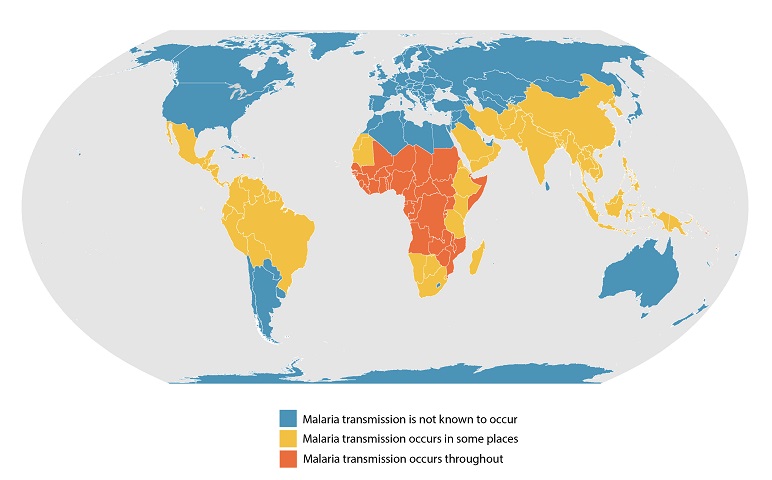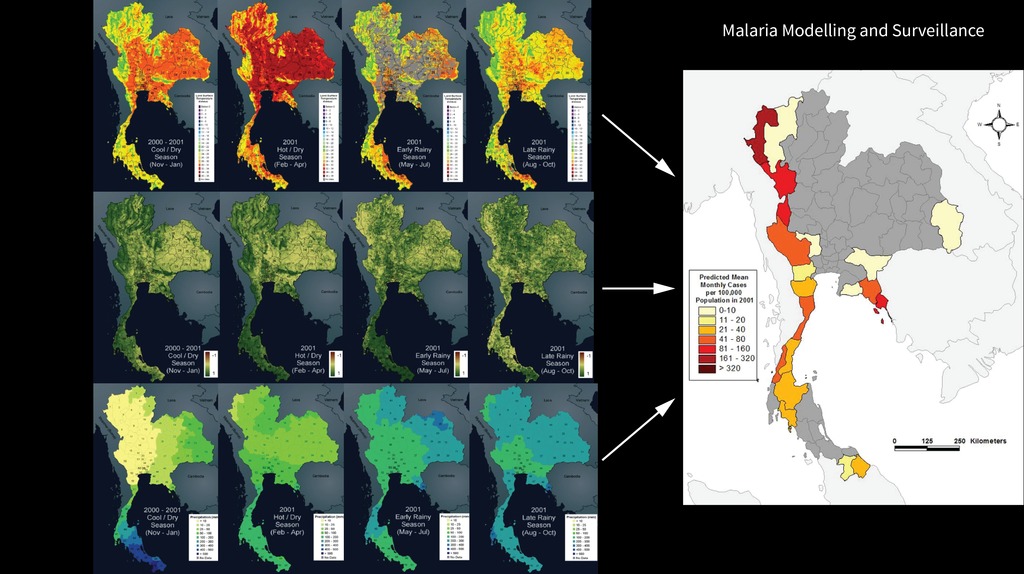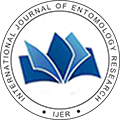Mosquito Science - GLOBE Observer
Mosquito and Mosquito Habitat Science
Jump to: Why study mosquitoes and mosquito habitats? -- Why does NASA want this information? -- Using Satellite Data to Predict Malaria Outbreaks (Video) -- Quick Facts About Mosquitoes -- Publications related to GLOBE Mosquitodata
Why study mosquitoes and mosquito habitats?
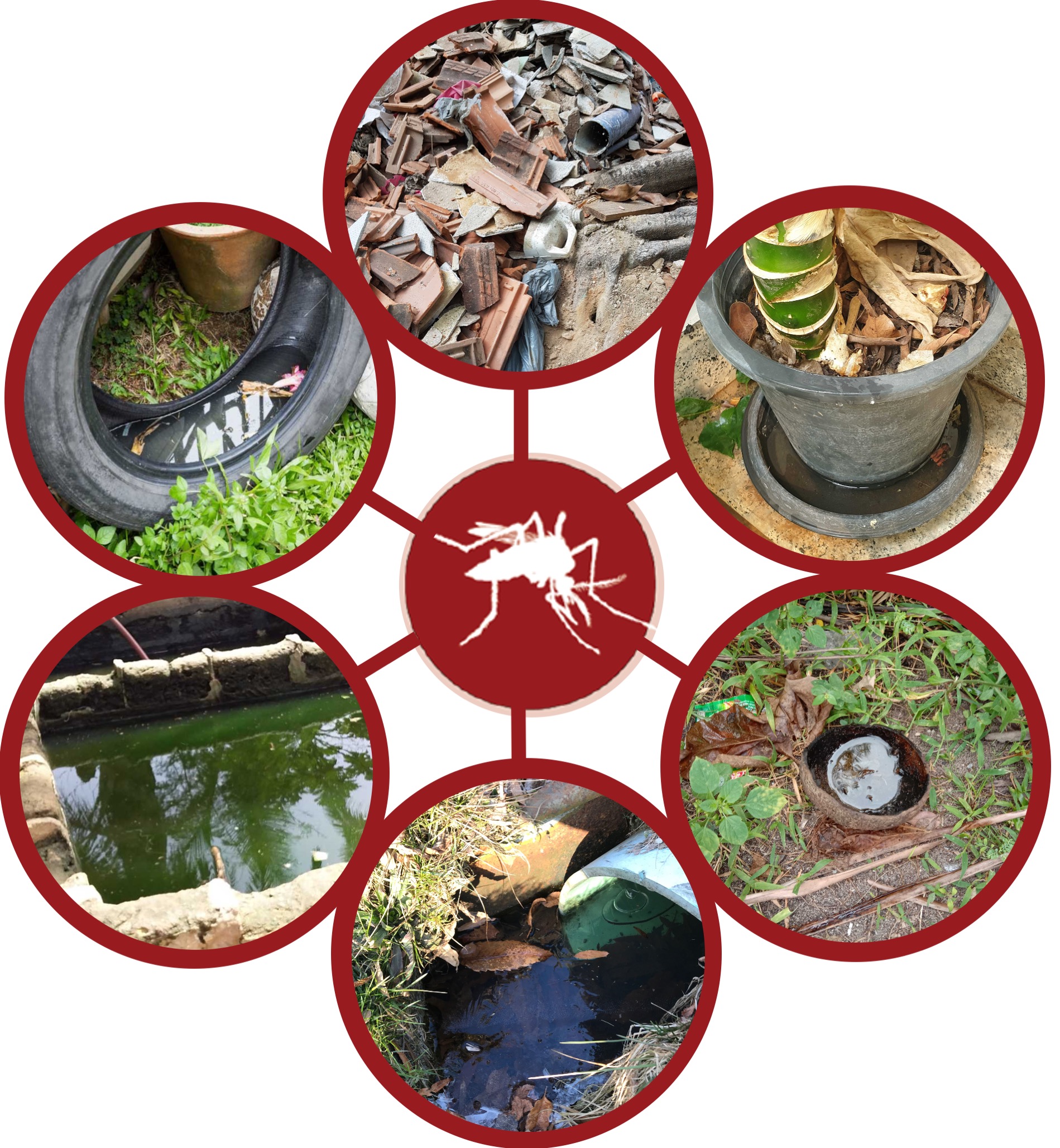
The life cycle of mosquitoes is closely related to their environment. The egg, larvae and pupae stages of the mosquito life cycle are dependent on water, especially standing water. Different species have different preferences for where to lay their eggs, whether in natural ponds or puddles, or artificial containers left by humans. Land cover and vegetation also play a role. Species vary in their preferences for vegetation cover, and some favor urban environments and proximity to human dwellings. Temperature is another important factor. The speed of the mosquito life cycle can be impacted by changes in temperature. Tracking where mosquitoes and larvae have been observed, along with environmental data, can help determine when outbreaks of disease such as malaria or dengue most likely will occur, or when chemical or other controls will be most effective.
The Mosquito Habitat Mapper tool focuses on collecting and identifying mosquito larvae in standing water. Note that handling of eggs and the larvae is safe: the eggs and larvae do not transmit pathogens that result in disease. Only the bites of female mosquitoes transmit pathogens that can cause disease. See the Taking Observations page for more safety tips.
More about:
Mosquitoes themselves are not the pathogen, they are simply the delivery mechanism for a disease, called a disease vector, transferring a pathogen from a disease reservoir to a host. The disease reservoir is the habitat in which the pathogen normally lives, grows, and multiplies (such as a mammal or bird). A pathogen is a disease agent, such as a virus or microorganism, which can cause disease. A host is an organism in which a disease-causing pathogen lives and replicates. Many common mosquito-borne diseases are caused by viruses: chikungunya, dengue, eastern equine encephalitis, West Nile, yellow fever, and Zika. One exception, malaria, is caused by a type of parasite called a protozoan. Mosquitoes get their own nourishment from sugars found in plant nectar, but female mosquitoes need the protein from blood for egg development, hence the biting of humans or other animals. While many times that bite is merely a nuisance caused as a byproduct of the mosquito’s desire to perpetuate her species, it becomes more problematic for humans when one of the previously mentioned pathogens is involved.
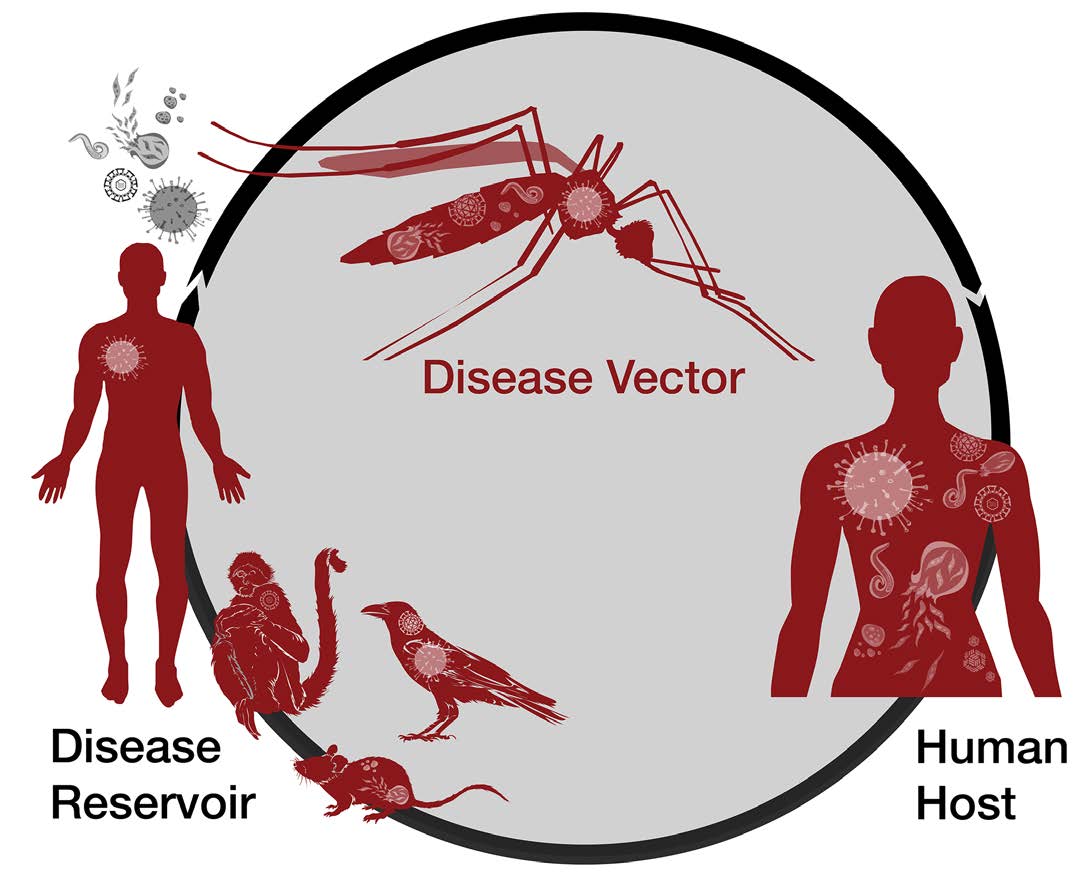
Image source: Beyond the Bite: GLOBE Mission Mosquito Disease Guide
The explosive spread of Zika throughout the Americas raised questions about the best ways to predict and control outbreaks of mosquito-borne diseases. Zika is transmitted by the mosquito Aedes aegypti and Aedes albopictus. These mosquitoes are a serious health problem because they have evolved and adapted to human environments. They preferentially breed in manufactured containers that contain standing water. They are also found in natural containers, such as water pooled inside a bromeliad plant, cut bases of bamboo, and shells and husks of nuts. These two species can also transmit other pathogens that cause a number of dangerous diseases, including dengue, chikungunya, and yellow fever. For more about mosquitoes and disease, refer to the Beyond the Bite: GLOBE Mission Mosquito Disease Guide.
Malaria is caused by a unicellular parasite in the genus Plasmodium. The mosquito acquires the Plasmodium parasite by ingesting blood from an infected human. Once inside the mosquito, the parasites reproduce and develop. When that mosquito bites a human, the parasites contained in the salivary gland are injected into the person’s blood. The cycle continues when additional mosquitoes acquire the parasite from biting an infected host. Malaria is common in tropical and subtropical areas of Africa, Southern Asia, Central America, and South America. While the disease has had significant impacts in the United States in the past, it is now considered rare. However, competent Anopheles vectors are established in many areas of the United States – so the reintroduction of malaria into the United States is a persistent risk. For more about mosquitoes and disease, refer to the Beyond the Bite: GLOBE Mission Mosquito Disease Guide
Image source: U.S. Centers for Disease Control and Prevention
Nearly 40% of the world’s population live in areas at risk for dengue. It is endemic in more than 100 countries throughout the South East Asia/Pacific, the Americas, the Middle East, and Africa. Dengue is common in the U.S. territories of American Samoa, Puerto Rico, Guam, and the U.S. Virgin Islands. Local dengue outbreaks have occurred in Hawaii, Florida, and Texas over the past ten years. Dengue is caused by a virus, which can be transmitted by a mosquito from one person to another. A mosquito can pick up the dengue virus when she bites a person who already has it in their blood. She can then pass the virus to another human during a subsequent bite. For more about mosquitoes and disease, refer to the Beyond the Bite: GLOBE Mission Mosquito Disease Guide
Climate models predict global average warming in the range from 2 to 4 °C (2–8 °F) by 2100. Rising temperatures may spread insect-borne diseases into areas where reports of infection have been relatively rare. In the Earth system, everything is connected to everything else, and changes in climate also have metabolic consequences for organisms, including Aedes aegypti, the mosquito that transmits the viruses responsible for yellow fever, dengue, chikungunya, and Zika. As the temperature rises, nearly everything about the biology of the Aedes aegypti mosquito speeds up when it comes to spreading disease. Bill Reisen, entomologist at University of California Davis, explains: “With higher temperatures you have more mosquitoes feeding more frequently and having a greater chance of acquiring infection. And then the virus replicates faster because it's hotter, therefore the mosquitoes can transmit earlier in their life.”
Rising temperatures also affect the spatial range where species are able to survive and thrive, for example allowing mosquitoes to live at higher elevations and higher latitudes than before. Both Aedes aegypti and Aedes albopictus have been observed as invasive species in regions where they weren't found previously, and can be expected to continue to expand their range based on shifting environmental conditions in a warming world.
Why does NASA want this information?
Mosquitoes can’t be seen from satellites, but the warm, moist conditions that mosquitoes prefer can be observed. NASA studies the seasonal patterns of temperature and precipitation, and how they may be altered by climate change. These changes could affect the movement of insects such as mosquitoes. Climate change can affect the spread of mosquito borne diseases such as Zika, malaria and dengue fever. Other factors such as land use are important factors contributing to the spread of diseases, as they contribute to providing suitable habitat for mosquitoes to breed and grow, and how the disease is spread between people.
Scientists use models with input from satellites which provide information on precipitation, temperature, soil moisture, and land cover. (For example, the Global Precipitation Measurement 


Predictions from models need confirmation, whether from ground-based observations of mosquitoes or larvae or reports of disease. In many parts of the world, there are insufficient ground validation measurements, but by using the Mosquito Habitat Mapper tool, GLOBE Observers are able to augment broad scale satellite-based research with highly targeted local ground-based observations at a high level of granularity.
Image source: NASA's Goddard Space Flight Center and the Scientific Visualization Studio 
The science lead for the Mosquito Habitat Mapper tool, Rusty Low, gives updates about recent research being done using the data collected via the GLOBE Observer app. (Originally aired during the GLOBE Observer Connection-Conversation-Celebration event held 26 July 2022.)
Using Satellites to Predict Malaria Outbreaks (Video)
In the Amazon Rainforest, few animals are as dangerous to humans as mosquitos that transmit malaria. The tropical disease can bring on high fever, headaches and chills and is particularly severe for children and the elderly and can cause complications for pregnant women. In rainforest-covered Peru, the number of malaria cases has spiked. In the past five years, the country has had on average the second highest rate in the South America. In each of the years 2014 and 2015 there were 65,000 reported cases.
Containing malaria outbreaks is challenging because it is difficult to figure out where people are contracting the disease. As a result, resources such as insecticide-treated bed nets and indoor sprays are often deployed to areas where few people are getting infected, allowing the outbreak to grow.
To tackle this problem, university researchers have turned to data from NASA’s fleet of Earth-observing satellites, which are able to track the types of human and environmental events that typically precede an outbreak. With funding from NASA’s Applied Sciences Program, they are working in partnership with the Peruvian government to develop a system that uses satellite and other data to help forecast outbreaks at the household level months in advance and prevent them from happening. Read the full NASA feature article on the project 
Quick Facts about Mosquitoes
The word “mosquito” is Spanish for “little fly.” While that may be an accurate description of its physical size, it directly contradicts the amount of misery the mosquito causes to the human species. Mosquitoes cause more human suffering than any other organism.
There are four life stages: egg, larva, pupa, and winged adult. The time it takes for a mosquito egg to become an adult depends on environmental conditions such as temperature and resource availability, and can range from as little as four days to over a month. Maturation typically takes about 8-12 days in the mid-latitudes. After the tiny eggs hatch, mosquito larvae (or wrigglers) feed on microorganisms and very small plant and animal particles. Mosquito pupae (also called tumblers) do not feed. Each species of mosquito has distinctive morphological, physiological, and behavioral characteristics. These include: preferred egg laying sites, diurnal behavior patterns, flight range, and preferred host. Flight distances vary between species-- from a few hundred feet to more than 80 miles with favorable winds. Both temperature and humidity are critical for adult mosquito survival. There are temperature tolerance limits at each developmental stage in the life cycle. Overwintering by different species can be as eggs, larvae, or adults. Download a diagram comparing the life stages of different types of mosquitoes.
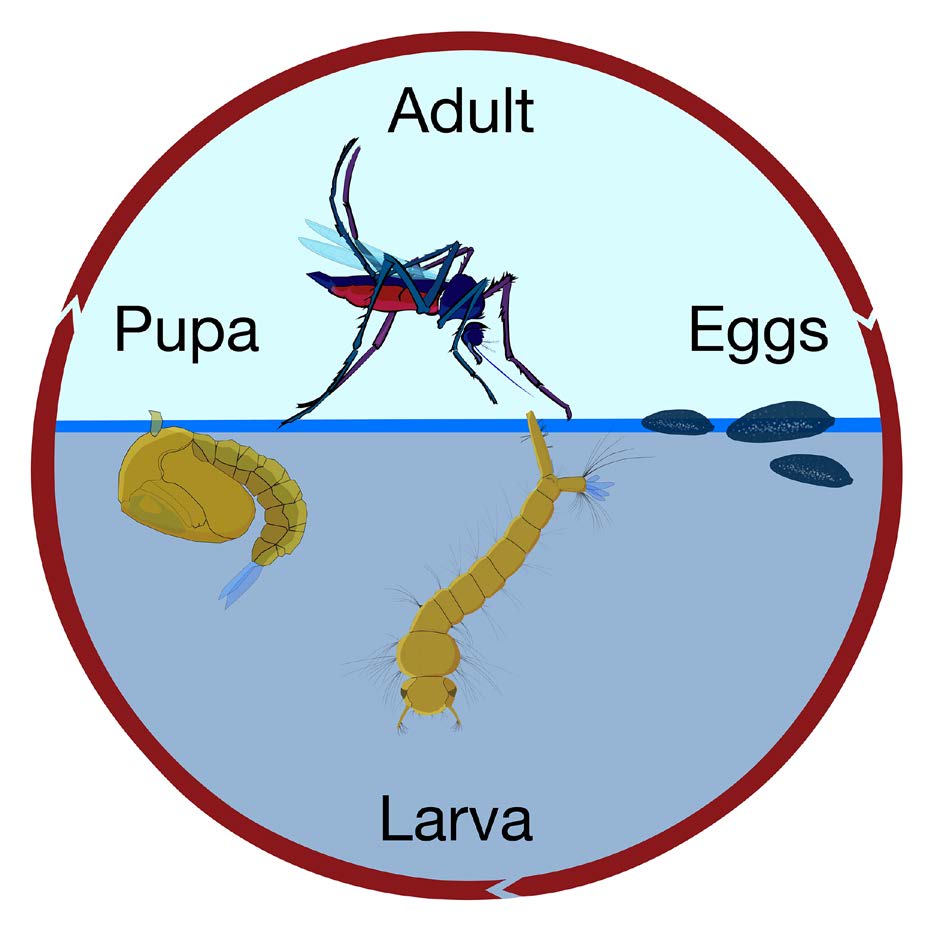
Image source: Beyond the Bite: GLOBE Mission Mosquito Disease Guide
Like many other insects, mosquitoes feed on plant nectar. Some mosquitoes are important pollinators, like bees! Females of some mosquito species also require a blood meal to provide additional nourishment for development of their eggs. Depending on the species, mosquitoes can have a preference for either humans or certain animals as the source of their blood meal. They locate their host by body odors, carbon dioxide, and heat.
Female mosquitoes can find a blood meal source in three ways: by observing movement and bright colors, for example in clothing; by smelling (olfaction) several odors associated with animals, such as carbon dioxide exhaled during breathing, lactic acid released in perspiration, and lotions/perfumes applied by humans, and by sensing warmth (body heat) from warm-blooded animals. The distance a mosquito can detect each of these things varies from less than a meter (body heat) to up to 10-15 meters (carbon dioxide).
Mosquitoes have no teeth. However, the female can use her long, sharply pointed, and serrated mouthpart called a proboscis to almost imperceptibly penetrate the skin. Within the proboscis are several tubes. One tube immediately begins to pump saliva into the victim. The saliva contains both enzymes that act as painkillers and anticoagulants that keep the blood from clotting, but it may also include any viruses or parasites she has picked up. Another tube sucks in the victim’s blood.
You may find mosquitoes anywhere that provides a pool of still water that allows the larvae to grow and develop. Different mosquitoes prefer different habitats. The yellow fever mosquito (Aedes aegypti) and the Asian tiger (Aedes albopictus) mosquitoes are well adapted to human-built environments. Their ancestors preferred tree holes as breeding sites, but now they seek out water sources near the humans and animals where the female will find its blood meal to nourish its eggs. They now preferentially seek out manufactured containers as breeding sites, from discarded water bottles and tires to water tanks, sewers and flowerpots. For more details, see the Know Your Mosquitoes comparative guide.
Many of the diseases transmitted by mosquitoes to humans have been around a very long time, but the connection between the two was only made relatively recently. On August 20,1897, Sir Ronald Ross, a British medical doctor, established the link between mosquitoes and malaria after discovering the parasite that causes malaria in the stomach tissue of a female Anopheles mosquito. Three years later, in 1900, following the publication of a paper by Dr. Carlos Finlay, MD, of Cuba and the investigations of the U.S. Army Yellow Fever Commission under the direction of Major Walter Reed, MD, the mosquito was confirmed as the vector of yellow fever.
Publications and Presentations Related to GLOBE Mosquito Habitat Mapper
For a more complete list of GLOBE Observer publications and presentations, visit the publications page.
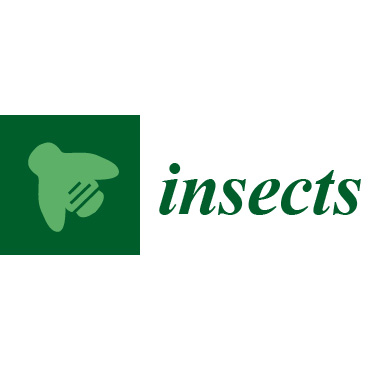
Low, R. D., Schwerin, T. G., Boger, R. A., Soeffing, C., Nelson, P. V., Bartlett, D., Ingle, P., Kimura, M., & Clark, A. (2022). Building international capacity for citizen scientist engagement in mosquito surveillance and mitigation: The GLOBE Program’s GLOBE Observer Mosquito Habitat Mapper. Insects, 13(7), 624. https://doi.org/10.3390/insects13070624

Citizen Science as an Approach for Responding to the Threat of Anopheles stephensi in Africa
Carney, R. M., Long, A. R., Low, R.D, Zohdy, S., Palmer, J. R. B., Elias, P., Bartumeus, F., Njoroge, L., Muniafu, M., Uelmen, J. A., Rahola, N., & Chellappan, S. (2023). Citizen Science as an approach for responding to the threat of Anopheles stephensi in Africa. Citizen Science: Theory and Practice, 8(1), 60. https://doi.org/10.5334/cstp.616
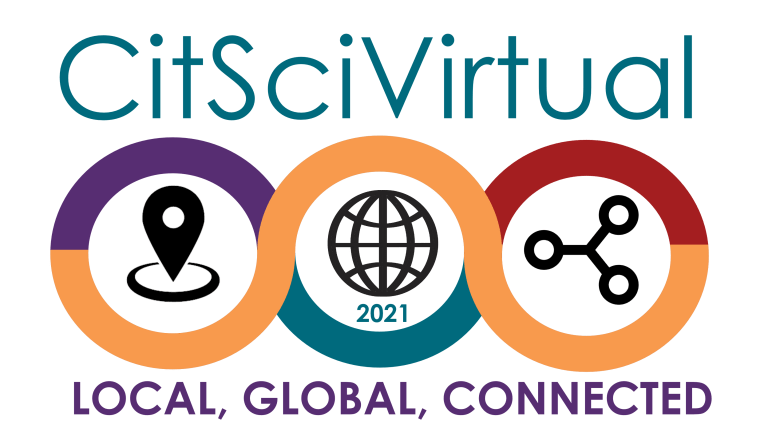
Citizen Scientist Contributions to Data Quality: Developing Algorithms to Improve Science Outcomes
Kimura, M., Babaria, P., Ingle, P., Clark, A., Low, R., and Nelson, P. (2021, May). Citizen Scientist Contributions to Data Quality: Developing Algorithms to Improve Science Outcomes. Virtual poster presentation at CitSciVirtual, conference of the Citizen Science Association.

Uelmen, J.A., Clark, A., Palmer, J. Kohler, J., Van Dyke, L.C., Low, R.D., Mapes, C.D., and Carney, R.M. (2023). Global mosquito observations dashboard (GMOD): creating a user-friendly web interface fueled by citizen science to monitor invasive and vector mosquitoes. International Journal of Health Geographics, 22, 28. https://doi.org/10.1186/s12942-023-00350-7

GLOBE Observer: A Case Study in Advancing Earth System Knowledge with AI-Powered Citizen Science
Nelson, P. V., Low, R., Kohl, H., Overoye, D., Yang, D., Huang, X., Chellappan, S., Azam, F. B., Carney, R. M., Falk, M., Garriga, J., Schelkin, L., Boger, R., & Schwerin, T. (2024). GLOBE Observer: A case study in advancing Earth system knowledge with AI-powered citizen science. Citizen Science: Theory and Practice, 9(1), 33. https://doi.org/10.5334/cstp.747
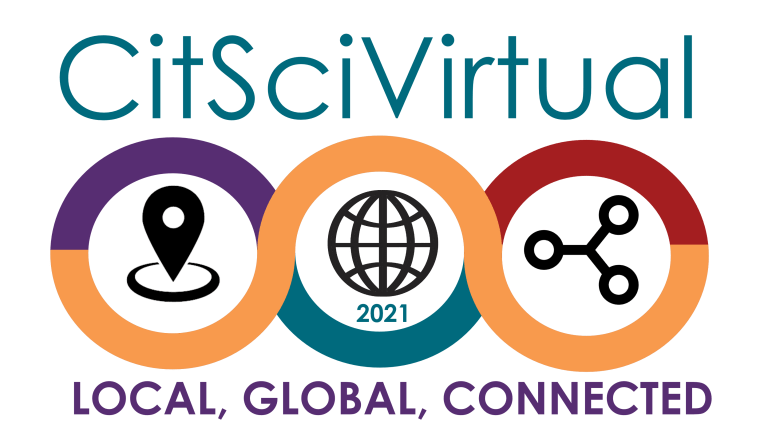
Ingle, P., Kimura, M., Babaria, P., Clark, A., Low, R., Nelson, P., and Boger, R. (2021, May). GLOBE Observer’s Citizen Science Information Quality Ecosystem: Examples from the Mosquito Habitat Mapper and Land Cover Tools. Virtual poster presentation at CitSciVirtual, conference of the Citizen Science Association.
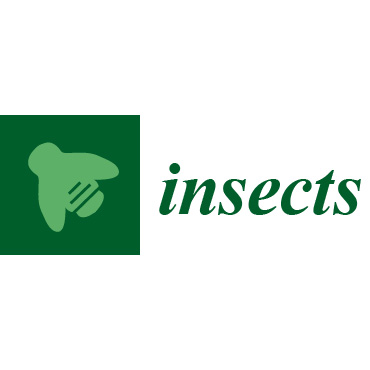
Carney, R. M., Mapes, C., Low, R. D., Long, A., Bowser, A., Durieux, D., Rivera, K., Dekramanjian, B., Bartumeus, F., Guerrero, D., Seltzer, C., Azam, F., Chellappan, S., & Palmer, J. R. B. (2022). Integrating global citizen science platforms to enable next-generation surveillance of invasive and vector mosquitoes. Insects, 13(8), 675. https://doi.org/10.3390/insects13080675
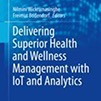
Muñoz, J.P., Boger, R., Dexter, S., and Low, R. (2019). Mosquitoes and public health: Improving data validation of citizen science contributions using computer vision. In N. Wickramasinghe and F. Bodendorf (Eds), Delivering superior health and wellness management with IoT and analytics. Healthcare Delivery in the Information Age Series. Springer, Cham. https://doi.org/10.1007/978-3-030-17347-0_23
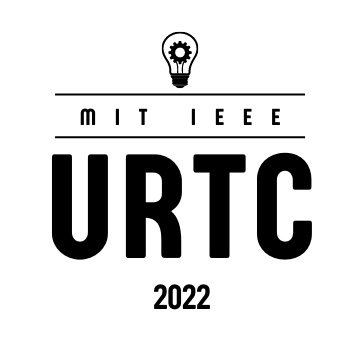
Predicting Future Mosquito Larval Habitats Using Time Series Climate Forecasting and Deep Learning
Sun, C., Nimbalkar, J., & Bedi, R. (2022). Predicting future mosquito larval habitats using time series climate forecasting and deep learning. Proceedings of the IEEE MIT Undergraduate Research Technology Conference (URTC). Institute of Electrical and Electronic Engineers. https://doi.org/10.1109/URTC56832.2022.10002240
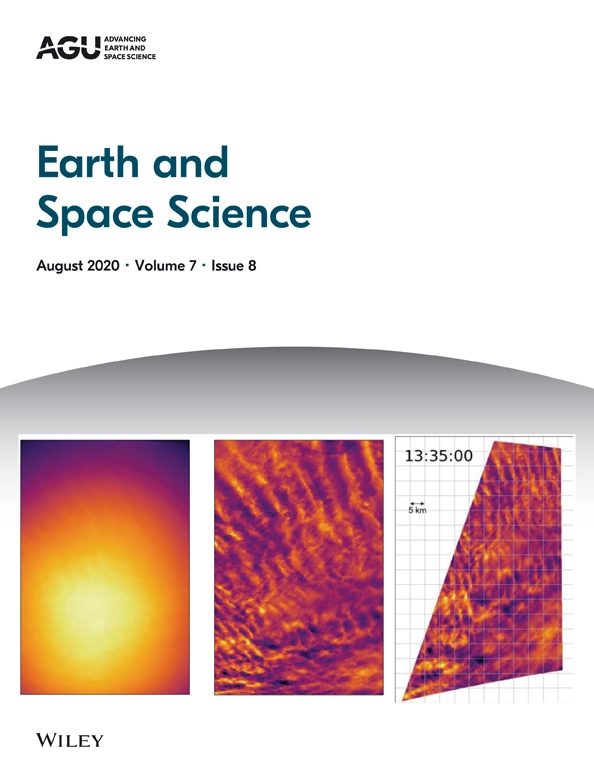
Technical Report: GLOBE Observer Data: 2016–2019
Amos, H. M., Starke, M. J., Rogerson, T. M., Colón Robles, M., Andersen, T., Boger, R., Campbell, B.A., Low, R.D., Nelson, P., Overoye, D., Taylor, J. E., Weaver, K. L., Ferrell, T., Kohl, H., & Schwerin, T. G. (2020). GLOBE Observer Data: 2016–2019. Earth and Space Science, 7(8). https://doi.org/10.1029/2020EA001175









